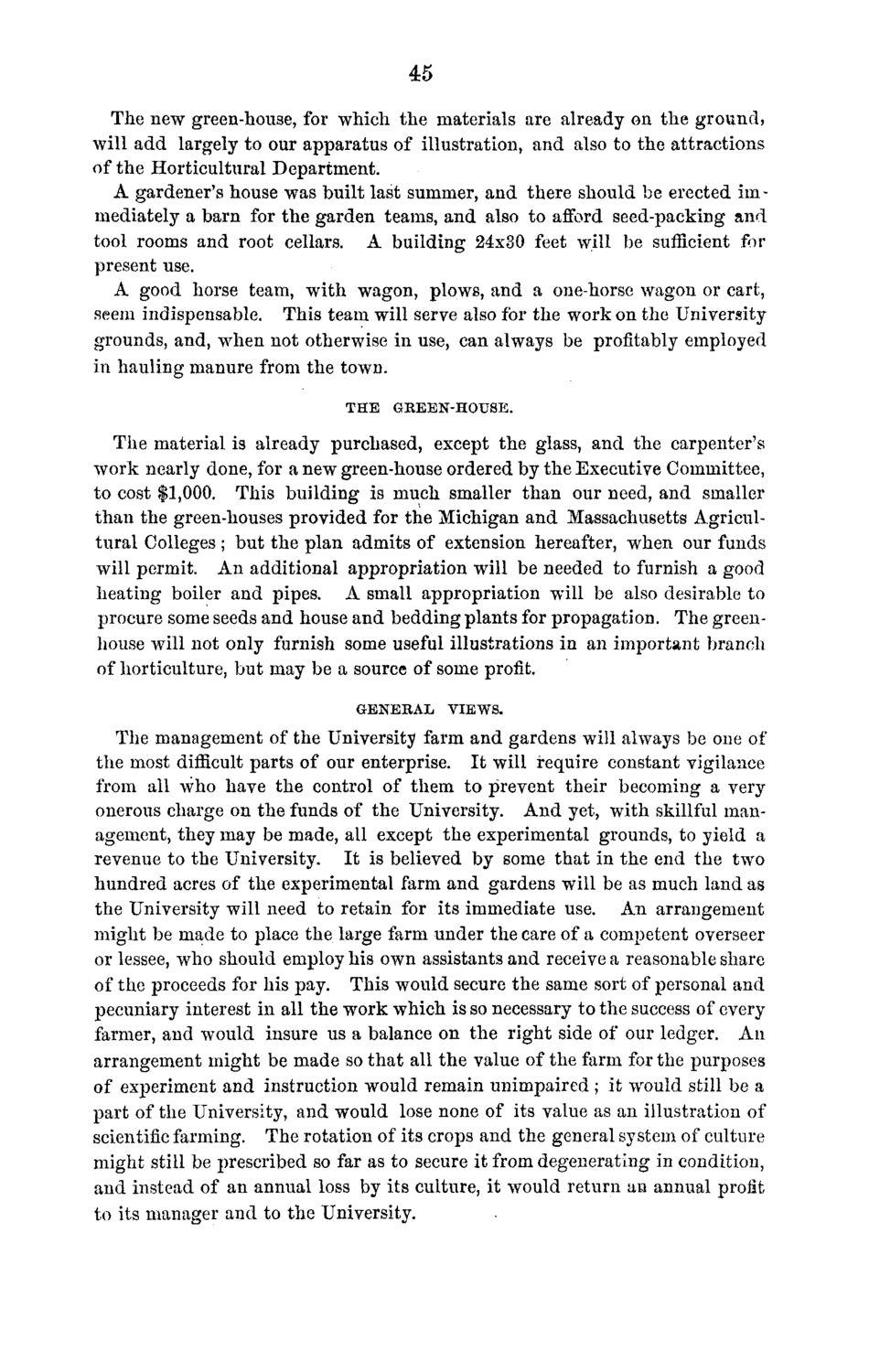| |
| |
Caption: Board of Trustees Minutes - 1870
This is a reduced-resolution page image for fast online browsing.

EXTRACTED TEXT FROM PAGE:
45 The new green-house, for which the materials are already on the ground, will add largely to our apparatus of illustration, and also to the attractions of the Horticultural Department. A gardener's house was built last summer, and there should be erected immediately a barn for the garden teams, and also to afford seed-packing and tool rooms and root cellars. A building 24x30 feet will be sufficient for present use. A good horse team, with wagon, plows, and a one-horse wagon or cart, seem indispensable. This team will serve also for the work on the University grounds, and, when not otherwise in use, can always be profitably employed in hauling manure from the town. THE GREEN-HOUSE. The material is already purchased, except the glass, and the carpenter's work nearly done, for a new green-house ordered by the Executive Committee, to cost $1,000. This building is much smaller than our need, and smaller than the green-houses provided for the Michigan and Massachusetts Agricultural Colleges; but the plan admits of extension hereafter, when our funds will permit. An additional appropriation will be needed to furnish a good heating boiler and pipes. A small appropriation will be also desirable to procure some seeds and house and bedding plants for propagation. The greenhouse will not only furnish some useful illustrations in an important branch of horticulture, but may be a source of some profit. GENERAL VIEWS. The management of the University farm and gardens will always be one of the most difficult parts of our enterprise. It will require constant vigilance from all who have the control of them to prevent their becoming a very onerous charge on the funds of the University. And yet, with skillful management, they may be made, all except the experimental grounds, to yield a revenue to the University. It is believed by some that in the end the two hundred acres of the experimental farm and gardens will be as much land as the University will need to retain for its immediate use. An arrangement might be made to place the large farm under the care of a competent overseer or lessee, who should employ his own assistants and receive a reasonable share of the proceeds for his pay. This would secure the same sort of personal and pecuniary interest in all the work which is so necessary to the success of every farmer, and would insure us a balance on the right side of our ledger. An arrangement might be made so that all the value of the farm for the purposes of experiment and instruction would remain unimpaired ; it would still be a part of the University, and would lose none of its value as an illustration of scientific farming. The rotation of its crops and the general system of culture might still be prescribed so far as to secure it from degenerating in condition, and instead of an annual loss by its culture, it would return an annual profit to its manager and to the University.
| |